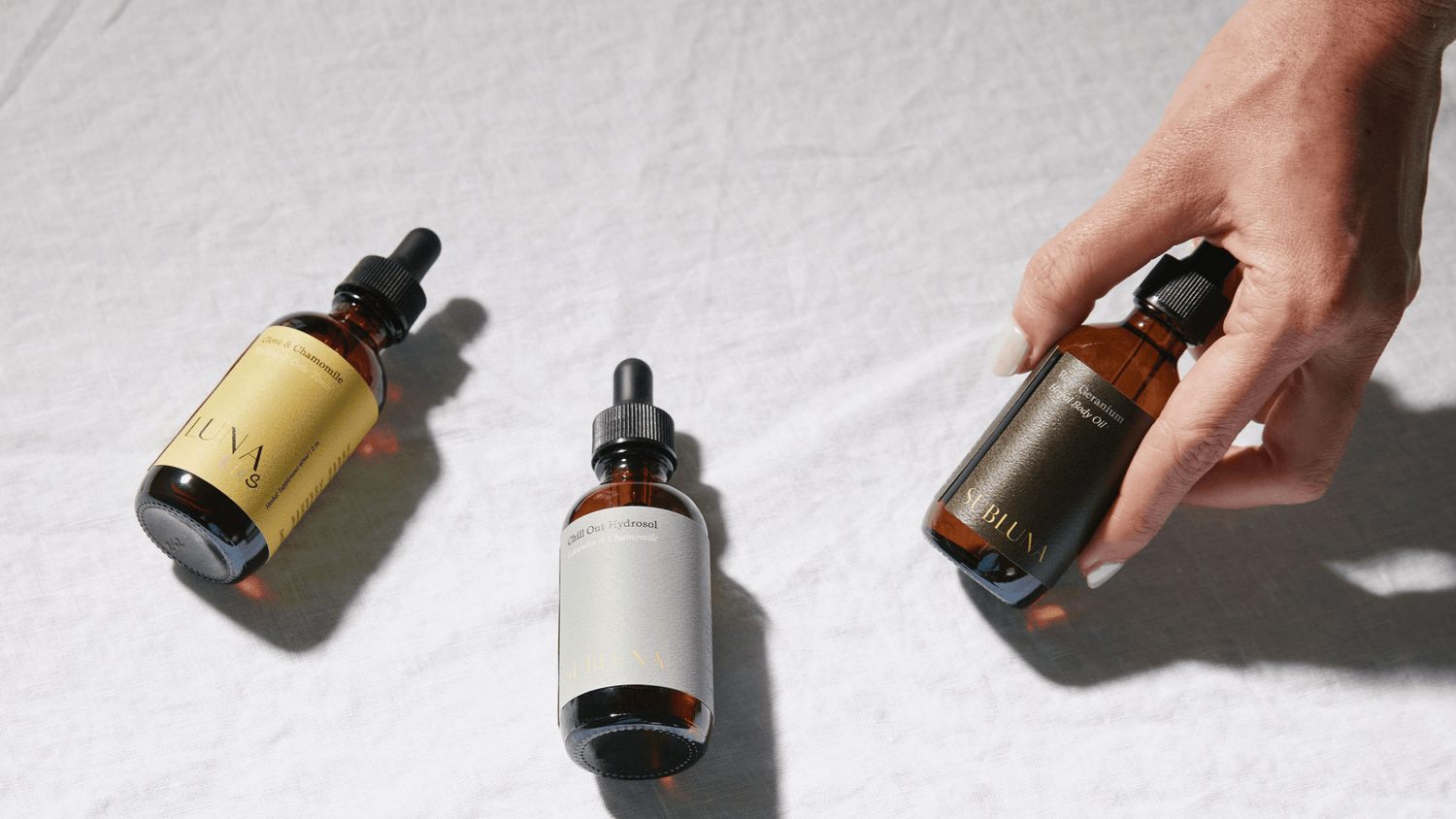The Vaginal Microbiome
The Vaginal Microbiome: Say Goodbye To Yeast & BV
The vaginal microbiome is a unique and delicate ecosystem, constantly influenced by a variety of factors. Pantyliners, underwear, tampons, suppositories, soap, sperm, lube, vaginal antifungals/antibiotics, and even menstrual blood can shift the pH balance. The resilience of the vaginal microbiome determines how well it responds to these influences and how easily it can maintain balance.
Vaginal Microbiome-Friendly Practices
Maintaining a balanced vaginal microbiome isn’t just about what to avoid during an infection—it’s about cultivating daily habits that support a naturally resilient microbiome. While a healthy vaginal microbiome should be able to handle occasional disruptions, these practices can help maintain balance and are especially important when dysbiosis is suspected:
- Avoid scented and non-organic menstrual care products – Fragrances and chemicals can irritate the vaginalenvironment and disrupt microbial balance.
- Avoid wearing pantyliners daily – Constant use can create a damp, less breathable environment that encourages imbalances.
- Choose natural, breathable fabrics – Synthetic materials like polyester trap heat and moisture, creating an ideal environment for bacterial or fungal overgrowth. Cotton or other natural fibers allow airflow and help maintain balance.
- Avoid scented soaps all over the body – Fragrances and harsh detergents can disrupt the natural pH, even if not used directly on the vagina.
- Skip washing the vagina with soap – The vagina is self-cleaning, and washing with soap—even mild ones—can strip away beneficial bacteria. Water alone is sufficient for external cleansing.
With a well-balanced vaginal microbiome, occasional exposure to these disruptors shouldn’t be an issue. However, when dysbiosis is suspected, these practices become essential to restoring balance and preventing further irritation.
The Cycle of Recurrent Infections
For many women, recurrent infections—alternating between bacterial vaginosis (BV) and yeast infections—become a frustrating, ongoing struggle. This often happens because the standard allopathic model treats each infection individually with antifungals or antibiotics, without addressing the underlying cause: a disrupted pH balance and weakened microbiome.
- Antibiotics for BV kill off bacteria, including beneficial lactobacillus strains, leaving the vaginal microbiomevulnerable.
- Antifungals for yeast infections wipe out fungal overgrowth but also disturb the balance of beneficial flora.
- After or before menstruation, when the vaginal pH naturally shifts, the imbalance becomes even more pronounced—creating the perfect environment for the other type of infection to take hold.
- This cycle continues, leading to monthly struggles alternating between BV and yeast infections, as one imbalance fuels the next.
Rather than repeatedly suppressing symptoms with harsh treatments that further destabilize the vaginal microbiome, a better approach is to nurture long-term resilience. Strengthening the microbiome with probiotic support, gentle antimicrobial herbs, and a pH-friendly lifestyle can help the body break free from this cycle and maintain lasting balance.
Gentle Ways to Heal from Infection & Support the Microbiome
Because of the sensitivity of both the vaginal microbiome and the vaginal tissue itself, harsh pharmaceuticals and aggressive natural remedies can sometimes do more harm than good when trying to rebalance pH or address discomfort.
Things to Avoid:
- Prescription antifungals and antibacterial creams – Disrupt microbial balance and often lead to recurring infections.
- Monistat and other over-the-counter antifungals – Kill both beneficial and harmful microbes, leading to further imbalances.
- Boric acid suppositories – Harsh on the vaginal lining and can disrupt beneficial flora.
- Garlic clove suppositories – Can be too strong for the delicate vaginal tissue and may cause irritation.
- Essential oil suppositories – Highly concentrated and can burn or irritate vaginal tissue.
- Harsh soaps and douches – Strip away protective bacteria and disrupt pH balance.
Better Approaches:
- Organic, plain yogurt inserted vaginally – Provides soothing probiotic support.
- A women’s probiotic inserted vaginally – Helps repopulate beneficial lactobacillus strains.
- Yoni steaming – Uses herbal steam to gently cleanse and support balance (avoid during pregnancy).
- Homemade herbal sitz baths or infused witch hazel – Applied topically for soothing and antimicrobial support. Herbal sitz baths can even be inserted internally into the vagina to cleanse it with a reusable douche bag. This is different from an OTC douche that is full of chemicals and fragrance and does more harm than good.
- Avoiding synthetic fragrances and chemicals in personal care products – Helps maintain a natural balance.
- Using natural lubricants – Water-based or oil-based lubricants that don’t contain synthetic preservatives or fragrances can prevent pH disruption.
The Vaginal Microbiome in Pregnancy and Birth
One of the most significant shifts in the vaginal microbiome occurs during pregnancy. As the body prepares for birth, the microbiome naturally becomes less diverse, prioritizing specific strains that will be beneficial for the baby. This is because, during vaginal birth, a baby is colonized with the mother’s vaginal bacteria—laying the foundation for their gut microbiome and immune system. This shift can also make some women more prone to infections during pregnancy, as the microbiome’s diversity is temporarily reduced.
If a pregnant woman suddenly notices frequent vaginal infections, vaginal sensitivity, or even a suspected sudden sperm allergy, it may indicate that she does not have high levels of lactobacillus levels in her vaginal microbiome, which are essential for both infant colonization and vaginal health.
Regardless, for those preparing for birth, vaginal probiotics and yogurt can also be used in the last month or two of pregnancy to ensure a strong presence of lactobacillus bacteria. This enhances the baby’s first exposure to good gut bacteria strains during birth.
Some women also follow these same protocols to reduce the likelihood of testing positive for Group B Strep (GBS) during pregnancy. By fostering a strong, resilient vaginal microbiome, the body can often naturally prevent the overgrowth of unwanted bacteria.
Cultivating a Resilient Vaginal Microbiome
The vaginal microbiome is not something that needs to be controlled or aggressively treated—it is something that thrives when supported with care, balance, and gentle nourishment. Rather than reacting to imbalances with harsh treatments that disrupt the ecosystem further, prioritizing long-term microbiome health fosters natural resilience.
By maintaining pH-friendly practices, avoiding unnecessary disruptors, and incorporating microbiome-supportive strategies, the body is better equipped to maintain balance on its own. Whether through daily habits, holistic interventions, or pregnancy preparations, the key to vaginal health lies in working with the body rather than against it.
A resilient vaginal microbiome is not just about avoiding infections—it’s about creating a foundation for overall well-being, comfort, and reproductive health at every stage of life.



